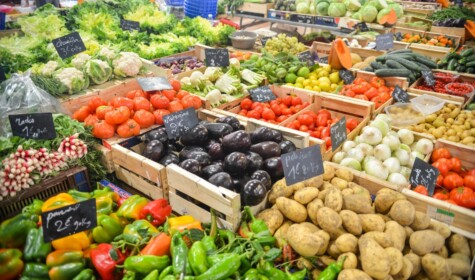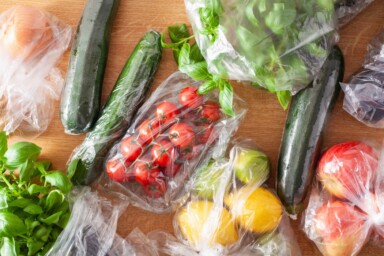In 2019, the University of Montana celebrated the grand opening of its student food bank. The event seemed to be surprisingly congratulatory – there was decorative ribbon, posters and visiting civic leaders from the greater Missoula community. Speeches addressed an issue that many students face – food insecurity.
Today, the student food bank is open two days a week. Struggling students, according to their needs and ability to reach the pantry within its scheduled hours, are permitted up to two visits a month. Upon arrival, food bank staff give the visitor a warm welcome, request they sign-in (and sign-out) on the form that sits to the right of the door, and then offer a tour of the food available in the pantry’s four muscle rack shelving units and single refrigerator.
The shelves mainly stock canned products, along with some dry goods, including canned soups and sauces, canned beans, canned tuna, canned chicken and canned fruit, just-add-water potato mixes, meat helpers and easy-prep macaroni and cheese. From the few options, students are at least able to choose between a diversity of brand varieties. A lone sack of brandless onions sits alone in the refrigerator.
While a student is allotted only two visits each month, they are invited to take as much as they need or can carry, with the caveat that they consider the needs of others.
Across campus, just a ten-minute walk from the new student food pantry, the University cafeteria – affectionately called the ‘Food Zoo’ – offers very different food options. Eight dollars (or, about six British pounds) allows a student entry to an ‘all-you-care-to-eat’ buffet-style dining room for meals that are award-winning for their wholesome quality, nutritional value and the ingredients’ sustainable and local sourcing – and not least for flavour and taste. Dining at the Food Zoo is a daily indulgence of locally procured vegetables, whole grains, meat and fruit and it is a celebration of Montana’s agricultural values and the University’s commitment to sustainability.
The breezy, cross-campus walk between the student food pantry and the cafeteria’s daily heart- and planet-healthy banquet obscures the real distance that divides each eating experience. The true chasm that exists between a free-of-charge and highly processed can of sodium-rich Campbell’s soup and a bottomless plate of steamed and lightly spiced local vegetables alongside a grass-fed beef and mushroom burger, is still little understood and even less talked about.
The ability to access fruits and vegetables varies within populations unequally, and the result is nutrition disparity. A general rule that can be seen across the globe as much as within the University of Montana’s student body, proves increasingly true: when money is tight for food, getting a hold of fruits, vegetables and other non-processed whole foods is nearly impossible.
The World Health Organization (WHO) acknowledges this problem by referring to the ‘double burden of malnutrition’, which indicates the coexistence of not having enough food alongside the dietary burden of obesity. The experience of both food insecurity and obesity compounds problems in relation to quality of life and increases risk of chronic diseases that are known to often accompany obesity, such as diabetes, cardiovascular disease, hypertension, stroke and some types of cancer.
The question, though, remains: why is it difficult to get healthy food for people who are food insecure?
The US Center for Disease Control and Prevention (CDC) argues that the problem is about getting access to supermarkets, which, apparently, is where all of the fruits and vegetables are. Unfortunately, though, the logic of the CDC ends there, and very little public health discussion concerns agricultural production as an aspect of food availability. The presiding wisdom – that treats access to fruits and vegetables only as a matter of access to retail – traces its history back to the 1990s and the Clinton and Bush Administrations. The decade’s economic restructuring saw the growth of food insecurity, yet both administrations were able to respond to the issue with great political expediency. Under these Governments, policies addressed ‘food deserts’ – places without nearby supermarkets – by giving private corporations tax breaks and subsidies for supermarket construction and offering people who are food-insecure new opportunities to go shopping.
The food desert framework recognises areas where affordable fruits and vegetables are scarce. Identifying these areas has increased public knowledge of nutrition disparity across the country. Yet, access to retail remains important only for individuals with the power to purchase.
In 2014, the Obama administration expanded policies on food insecurity to include obesity. The priority for food security, once placed on private-public partnerships, morphed to address consumption of fruits and vegetables. The policies financially supported construction of over 125 supermarkets and seemed to solidify a link between healthy food consumption and access to retail. This framework targets transportation and an individual’s proximity to a supermarket as primary parts of the problem but excludes other factors contributing to nutrition disparity, consequently limiting public capacity to tackle the problem.
Still more, the over-emphasis on the availability and proximity of a shopping location quietly mocks the food insecure. Critics of the policy draw attention to whether a supermarket expansion scheme in food deserts is an effective way to increase fruit and vegetable consumption. For example, Nathan A. Rosenberg from the University of Arkansas and Nevin Cohen from the CUNY Food Policy Institute, argue that very little actual evidence exists to indicate a positive impact on food choice, dietary health or consumption from supermarket development. Rather, Rosenberg and Cohen argue that often the true problem inhibiting a healthy diet, is poverty. Epidemiological data from public health supports their theory: where obesity and food insecurity co-exist, poverty is a common denominator.
For many years, excess weight and associated chronic diseases were considered to be diseases of the wealthy. About six decades ago, when increasing incidence of chronic disease first instigated public alarm – around the same time American physiologist Ancel Keys argued with British nutritionist John Yudkin over whether sugar or saturated fat caused obesity – the proverbial image of an overweight person was a rich businessman. Accordingly, the idea of obesity as a ‘condition of excess’ prevailed for decades. In fact, when scientist William Dietz first noticed hunger and obesity occuring together within poor populations, he was confounded. In his 1995 landmark study, ‘Does hunger cause obesity?’, he called the phenomenon ‘paradoxical,’ because ‘a condition of having inadequate food supply’ seemed entirely contrary to ‘a condition of excess’. Notwithstanding his astonishment, Dietz’ research continues to be reliable. Today, studies in population health observe the obesity shift to be a predictable socio-economic trend. Over time, obesity along with its many health risks, shifts within societies from the rich to the poor.
Processed foods are generally high in sugar, unhealthy and nutrient-poor fats and empty of vitamins and minerals, contributing to obesity and related diseases. It is these foods that fill the University of Montana’s student food pantry, and these foods are most readily available to people who are food insecure. Here, the goal to achieve food security compromises nutrition and health. As public health treats obesity separately, the message persists that the condition is a result of eating in excess, rather than the result of what types of foods are consumed.
If diet-related chronic disease and food insecurity continue to be treated as separate public health priorities, the nutrition disparity will continue to grow.
For decades, the focus on improving food security and increasing access to health-promoting fruits and vegetables has depended narrowly on transportation to and proximity of supermarkets, which has had little impact on consumption of fruits and vegetables and still less on reducing the prevalence of diet-related chronic disease. The dual task to reduce both food insecurity and chronic disease, therefore, requires a concept of food access that may involve retail, but more urgently, goes beyond the grocery store.
A greater framework for dietary health and nutrition equity would focus first on the development of regional agriculture – specifically, the production of fruit and vegetable crops. Broadening the public health framework from supermarkets to farms shifts the focus further upstream from ‘access to retail’ to ‘access to healthy food systems’.
Rather than a top-down approach, public support for agriculture has potential to stimulate commerce from the soil up. Homegrown, place-based food economies will circulate fruits and vegetables more efficiently than global, centralised systems that rely on long-distance transport, shelf-life and economies of scale – as evidenced during the pandemic. To effectively address growing nutrition disparity, public health action needs to focus on community health activities, beginning at the grassroots level. The first step to comprehensive action for nutrition equity will be to build public health partnerships with community farmers.







